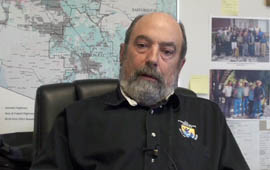Cronkite News has moved to a new home at cronkitenews.azpbs.org. Use this site to search archives from 2011 to May 2015. You can search the new site for current stories.
Feds designate more areas as critical to endangered flycatcher
PHOENIX – Federal officials have added nearly 500 miles of riparian area totaling nearly 90,000 acres to habitat considered critical to the recovery of the southwestern willow flycatcher, an endangered songbird.
The land in question is in Arizona, California, Nevada, Utah, Colorado and New Mexico. In all, 1,227 miles of riparian area encompassing 208,973 acres has been designated critical habitat.
The flycatcher, whose scientific name means “mosquito king,” typically nests along rivers and streams.
The expansion, announced earlier this month and effective on Feb. 4, is a response to litigation by the Tucson-based Center for Biological Diversity. It includes stretches of the Gila River.
“The significance is the flycatcher now has a chance of recovery,” said Noah Greenwald, endangered species director for the Center for Biological Diversity. “Not only does it help protect the flycatcher, but it provides protection for some areas where the flycatcher population doesn’t currently occur, meaning the population could recover and expand in these areas as well.”
Over the years, much of flycatcher’s habitat has been lost to dams, water withdrawal and livestock grazing. It was given protection in 1995 under the Endangered Species Act.
Steve Spangle, a Phoenix-based field supervisor of the U.S. Fish and Wildlife Service, said the designation is important because of how easily the flycatcher’s territory can be naturally altered.
“Whenever you’re talking about riverside habitat, changes are rapid,” he said. “A big flood can take out miles of willow habitat, so that riparian territory is very dynamic.”
Greenwald and Spangle agreed this move feels like a victory.
“The process of recovery, to some degree, is still ongoing, but it’s gratifying to see increased protection after working for so long to save this unique bird,” Greenwald said.
“We’re making progress,” Spangle said. “It’s very possible that with continued careful management we can get to the point where we can delist the species sometime.”









